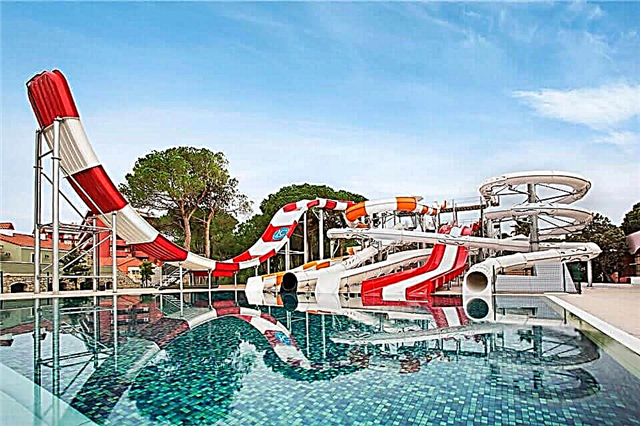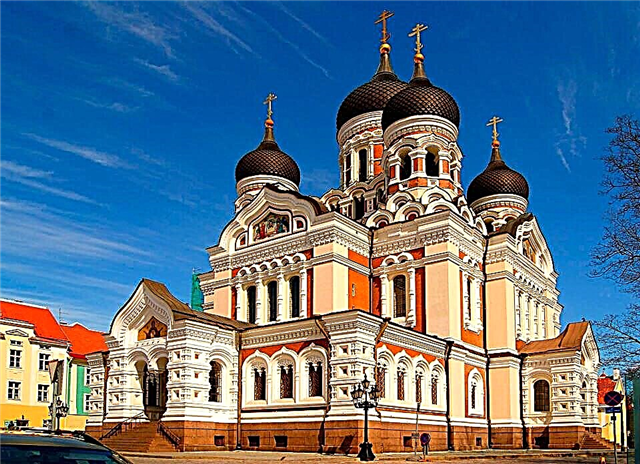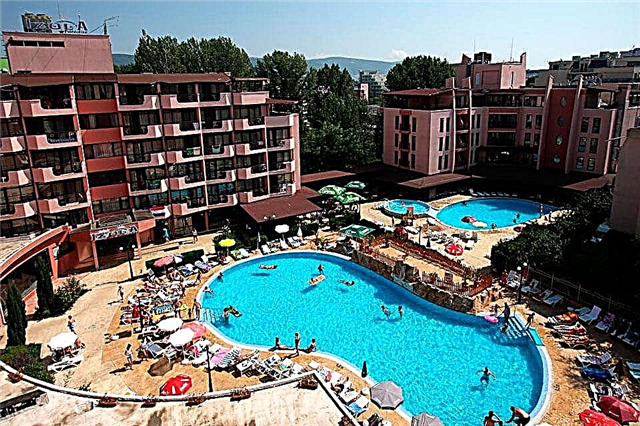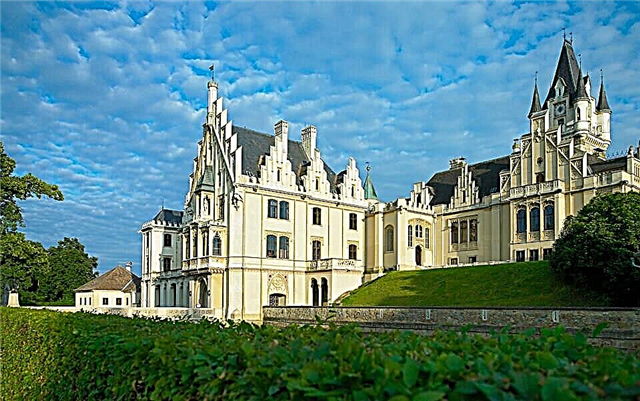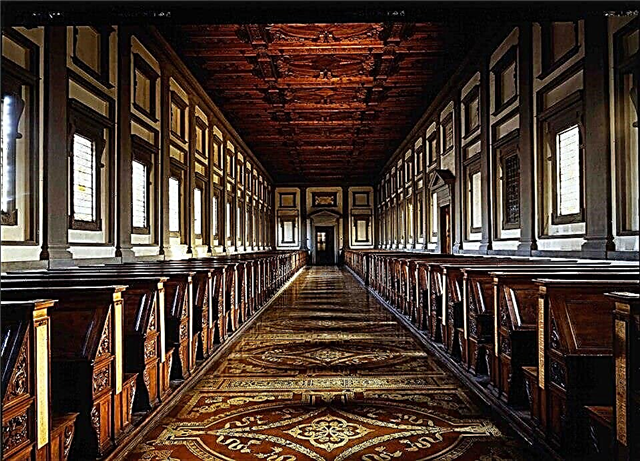To visit the birthplace of the Renaissance is the dream of every self-respecting tourist. But you won't be able to get around all the beauties of Florence in a couple of days: there are too many attractions, and at every turn of an old street a new historical secret is revealed or a new architectural masterpiece is shown with its domes and spiers.
Here is the Basilica of San Lorenzo in Florence - one of the oldest churches in the city - striking in its size, grandeur and history stretching back deep into the centuries. Michelangelo, Brunelleschi and other famous masters of Italian architecture once had a hand in its creation. Tourists flock here from all over the world, as to a place where a special power is concentrated, and it is not surprising: according to the history of the basilica, you can study the history of the legendary Medici dynasty, because almost all representatives of the famous family are buried here.
In addition, the image of the basilica is widespread in popular culture. Even the younger generation will surely recognize the church: it is shown in the famous computer game "Assassin's Creed II". Suffice it to recall the mission, where it was necessary to get into the courtyard of the church and kill the servant of the tyrant monk Girolamo Savonarola - this, by the way, is a real historical character, who at one time came to power to replace the Medici - and the massive walls of the old building immediately appear before your eyes. Yes, this is it, the Basilica of San Lorenzo!
By the way, San Lorenzo is a bit of a misnomer. If you call the basilica the way it sounds in the original language - Italian - you need to add the prefix "di" at the beginning. In addition, there is another name that has taken root in the Russian language: the Church of St. Lawrence. How it appeared - we will explain below.
Construction history

At the end of the 4th century AD (it's hard to imagine - 16 centuries ago!), A small but beautiful church was built on the site of the current basilica. It was ordered to be erected by the influential Milanese archbishop of that time Ambrogio.
The relics of two Christian saints were kept here at once: St. 4 centuries and, according to Christian legends, possessed the gift of healing, he generously distributed alms, was chosen as a bishop and preached the word of God, and then was tortured with his sister on the cross and in a boiling cauldron and killed by the Roman emperor Diocletian).
It should also be noted that until the beginning of the 7th century, it was this church that was the main Florentine cathedral. Then this honor was taken over by the Cathedral of Santa Maria del Fiori, and San Lorenzo stood in its original form until the 11th century. In the 11th century, the church was no longer as good externally and internally as at first: it needed a serious reconstruction. The money for the reconstruction was collected by the whole world, which can be safely said: the 11th century Basilica of San Lorenzo is a real folk church.
The original simple, uncomplicated appearance was obscured by a more majestic and formidable Romanesque style, but even in this form the basilica did not last long: in the 15th century, none other than Giovanni Medici himself drew attention to it. The representative of the legendary family conceived to equip a family tomb here, but for this the church had to be expanded and made richer and more luxurious. The new restoration was commissioned by Filippo Brunelleschi.
In 1421, a large-scale construction project was launched on this site. Brunelleschi devoted seven whole years to the construction of the so-called Old Sacristy (now it is Old, and then it was just Sacristy). To begin with, by the way, it is necessary to understand what sacristy is, because this word came from the Italian language and literally means “sacred utensils”.
In fact, this is the same as the sacristy in the Orthodox Church: a room located, as a rule, near the altar (on the side or behind it), here are kept the robes of the clergy, the Bible, Testaments, prayer books and other books, various devices, vessels with the sacred water and oil, in a word - everything that is necessary for carrying out various services and rituals. It is here that the bell rings, announcing the beginning of the Mass, it is from here that the bishop comes out to the people before the service and it is here that he enters after it.

So, it was in Sacristia, according to the plan of the Medici and Brunelleschi, that the first burial of the representatives of the famous Florentine family was organized. The chapel was crowned with a round dome, and within its walls there was enough room for the installation of marble tombs. After the chapel was built, Brunelleschi was supposed to do further restoration, but it did not work: Giovanni Medici died - and was buried in his new tomb in the basilica - the money for the construction ran out, and the famous architect took up the dome of another cathedral. Work in the Church of San Lorenzo ceased for many years.
Construction resumed only in 1441, already under the patronage of Cosimo Medici, the son and heir of Giovanni. This time another famous Italian architect Michelozzo di Bartolomeo was appointed as the architect. Construction lasted 20 years - until 1461. Three years later, Cosimo Medici died and was also buried in the crypt of the basilica. Since then, all representatives of the Medici family began to be buried here.

But even on this, the history of the construction of the Church of San Lorenzo cannot be considered closed. Almost 60 years later, the new representative of the Medici family, Pope Leo the Tenth, decided that the temple needed restoration and new expansion. The work was entrusted to Michelangelo Buonarotti. It was under his leadership in 1520 that the construction of the New Sacristy began - there, according to the plan of the architect and the customer, subsequent generations of the Medici were to be buried, when the places for the tombstones in the Old Sacristy run out.
What is very curious, Michelangelo disposed of the space differently from what was customary in those days: he placed tombstones along the walls, and not in the center of the hall. The great architect also designed tombstones and built a small chapel in New Sacristia. It is known that Michelangelo also had to redesign the facade of the basilica, decorating it with reliefs and statues, but his vision and that of the Medici did not coincide (Michelangelo wanted to lay out the facade with luxurious marble from Carrara, and Medici with Pietrasanta stone), and the architect refused this work.
That is why the facade of the building remained quite simple and uncomplicated: after Michelangelo, no one began to make significant changes to the appearance of the basilica. In the 15th century, bronze pulpits by Donatello appeared in the basilica. The final touch, after which the basilica took on a more or less modern external and internal composition, was the construction of the Chapel of the Princes in the 17th century. It was designed by Matteo Nigetti and Pietro Benvenuti. After that, there was another restoration, but it did not significantly affect any of the main attractions of the Basilica of San Lorenzo.
Today, the Basilica of San Lorenzo is a functioning Catholic church where services are held, as well as a large museum complex that includes several expositions for tourists from all over the world. The queues here are usually long, because the basilica has a rich historical and cultural component, but to come to Florence and not come here is a real crime.
Architecture
The facades of basilicas in those days were invariably decorated with various stones, reliefs and bas-reliefs, statues, stained glass windows, and carvings. The Basilica of San Lorenzo looks unreasonably austere and austere ascetic against the background of other decorated buildings in the historic center of Florence. But it is precisely in this simplicity that, perhaps, its peculiarity and its beauty. Deaf stone walls of ivory color, strict straight lines, orange domes, small arched windows, laconicism and unpretentiousness - this is the outside of the Basilica of San Lorenzo. But what's inside?
Interior

And inside there are luxurious interiors from the greatest masters of the Middle Ages. The pillared basilica is divided into three naves. The columns were installed by the architect Vasalleto. Elegant geometric designs on the floor and ceiling. Everywhere there is marble, gilding, expensive jewelry. Each room deserves a separate mention and the attention of a tourist. The interior of the central hall is especially beautiful in the light of the sun penetrating with its rays through the arched windows.
What to see?
Of course, first of all, a tourist needs to visit two sacristies, the Chapel of Princes and the famous Laurentian Library. After that, you can go to the courtyard.
Old sacristy

The old Sacristy, as already mentioned, was built by Brunelleschi, but most of the interior decoration is from Donatello. It was he who created countless church-themed bas-reliefs, limited by graceful arches, lunettes and multi-colored medallions. Among the famous works of Donatello is also a majestic and large-scale image of the starry sky on the inner side of the dome: his master painted in 1442. Pietro, Giovanni and Cosimo Medici are buried in the Old Sacristy. Their splendid tombs are decorated with the hand of another famous Italian master Verrocchio.
New Sacristy

New Sacristia is the main focus of tourist interest in the basilica. It is here that people from all over the world come to admire the masterpieces of Michelangelo Buonarotti, because his interior decoration of the sacristy is one of the best works of the master for all the time of his work. It is not surprising: Michelangelo spent 15 years decorating the sacristy.
Among the most significant works of the master are statues, united by a single compositional concept and symbolizing birth, flow, decay of life and death. Lorenzo and Giuliano Medici are buried in the New Sacristia. On the lid of the latter's tomb is the famous variation of the Madonna and Child.
Chapel of Princes

The highest dome of the Basilica of San Lorenzo and the third largest in Florence is crowned by the Chapel of the Princes - the tomb of the Medici family. All other members of the legendary family are buried here. The dome was painted with colorful frescoes by Pietro Bonvenuti, and the windows were carved in such a way as to illuminate the ancient painting as efficiently and effectively as possible.
The walls of the chapel are faced with expensive marble, into which the coats of arms of the famous Florentine family are mounted. In addition, there are two statues here: Cosimo Medici and Ferdinand the First Medici. It was originally planned that there would be more statues, but further decoration was never completed.
Library of Lawrence

The Laurentian Library, Laurentian Library (in Russian) or Laurenzian's Library (in Italian) - no matter how different people call it, this place definitely deserves attention. It was built in the first half of the 16th century by order of Pope Clement the Seventh Medici, and the architect was also Michelangelo Buonarotti.
In addition to the luxurious interior decoration and the famous "lava" staircase, there is a huge collection of old books and manuscripts, some of which are unique, for example, the Bible from the 8th century BC. e., or the first Roman encyclopedia of history.
Courtyard

The inner courtyard on the territory of the Basilica of San Lorenzo is a kind of transition between the chapels and the Library of Lawrence. It is quite small in size, but it will still find something to surprise and delight tourists: a luxurious orange tree grows in the center here, and from it, like rays from the sun, neatly trimmed lines of flowering shrubs diverge.
Opening hours and ticket prices
The opening hours of the basilica for tourists are as follows:
- Mon-Sat 10.00.-17.00
- Sun 13.00.-17.30. (from March to October)
- Sun closed (November to February)
Now about the prices. For 4.5 euros you can buy a ticket that will take you to the basilica itself, as well as to the Old Sacristy and the Chapel of Princes. The entrance to the New Sacristy, aka the Medici Chapel, will cost 8 euros. For a visit to the Lawrence Library, you will have to pay another 3 euros. Unfortunately, there is no ticket common for visiting all the premises and expositions at once. It should also be noted that tickets can be purchased on the website (it will be financially more profitable), in addition, there is a separate queue for visitors with electronic vouchers, so you won't have to stand at the entrance for a long time.
Also in the basilica you can buy tickets for individual or group excursions, which are held at different times, on different topics and for different audiences. By the way, on Sundays there are masses - the church is active - so if the purpose of the inspection is exclusively the main premises of the basilica, you can go there for free, among the Florentine Catholics who came to the service.
Where is it located and how to get there
The official address sounds like this: Piazza di San Lorenzo, 9. The Basilica of San Lorenzo is indeed located on the square of the same name, and all this is in the historic center of Florence. You can get here by public transport or taxi. In addition, all walking routes in the city also pass through the famous basilica.

